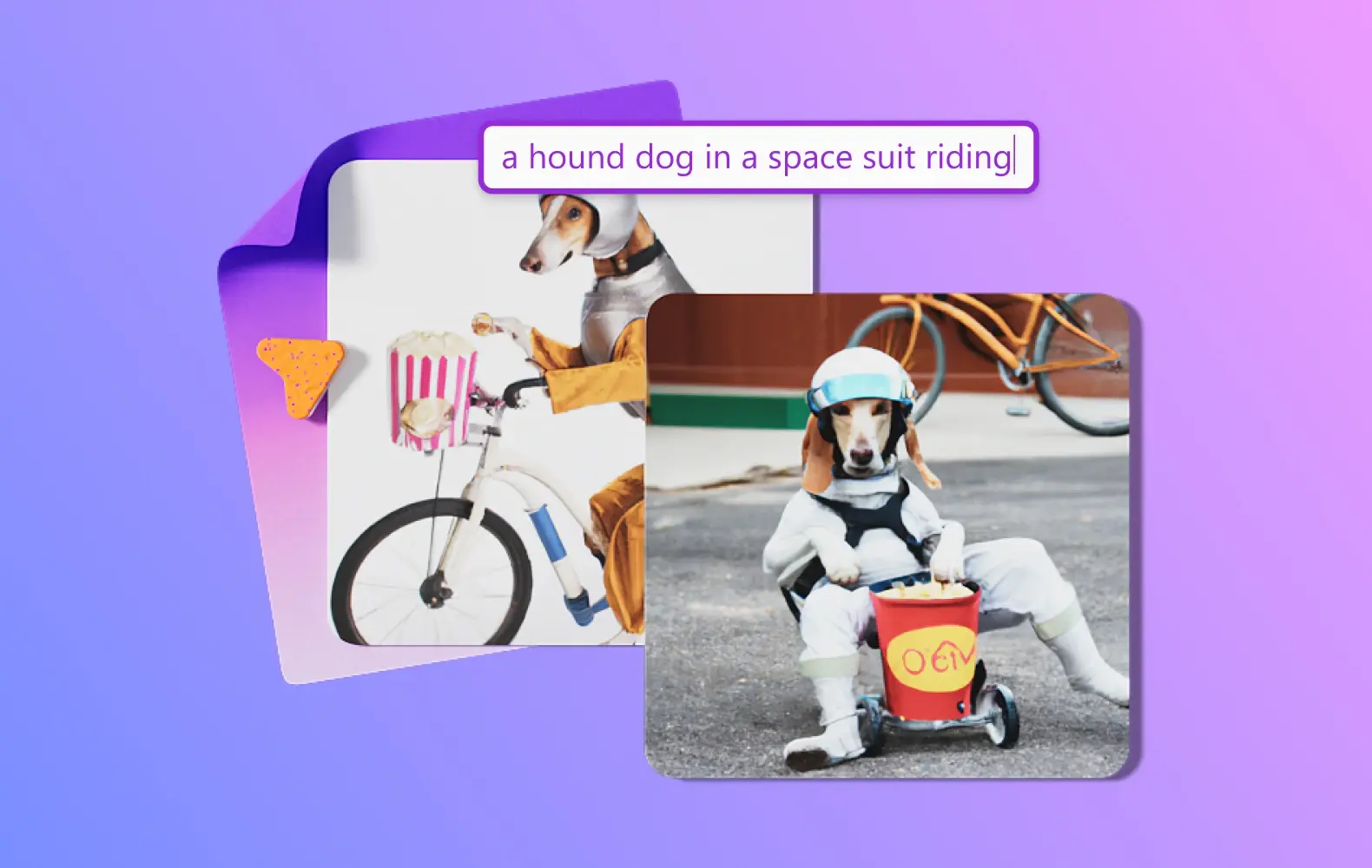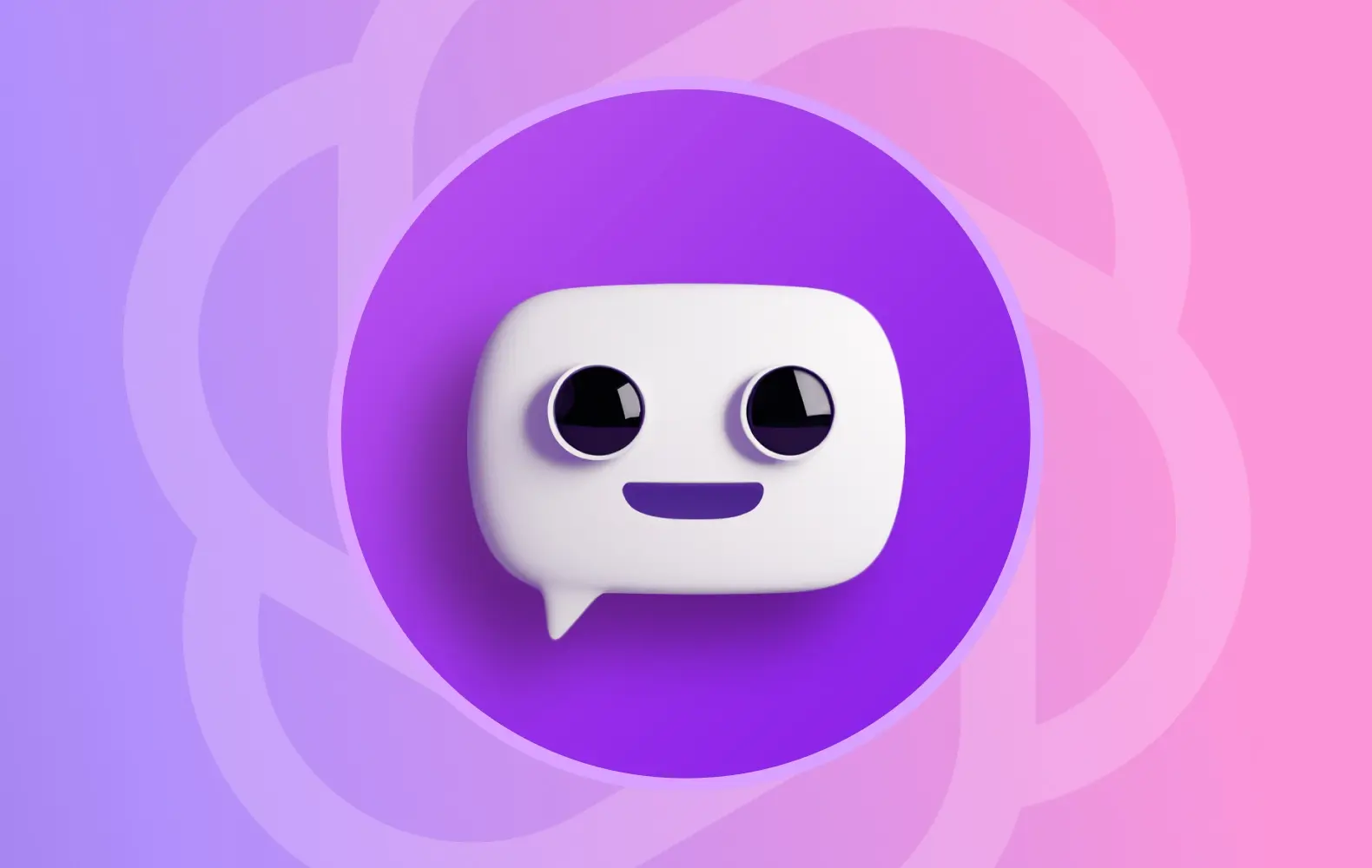Artificial Intelligence isn’t new but I believe that we’ve hit a point where it is truly useful for individuals, companies, and especially us as creators! To me, the most exciting part of this AI wave is what it can offer to support, streamline, and grow your business. In this article, I’m going to share some AI trends I see emerging that are especially important for creators. We’ll of course talk about some of the most popular tools like ChatGPT and DALL-E, but I’m hoping to also blow your mind a little bit with examples about what else is currently possible with AI (or will be very soon).
Add AI to your team
I think of using AI as a super-boost for creators. It can help us feel like we have a full team behind us even if we’re still in the scrappy phase of our journeys and it’s just us at our desk.
There are new tools launching every day that are built to be your assistant, sidekick, or partner in content creation.
For example, tools like ChatGPT can help you research things, formulate ideas, and generate a first draft of a wide range of content in a matter of seconds. I shared more about how I use ChatGPT as a creator here.
Microsoft’s Designer is another exciting tool that can be your partner in content creation. If you need to create a piece of art or a design asset, you can tell Designer what you need and it will use AI to generate it for you. It might not be exactly what you want at first, but it should be a pretty good first draft and you can ask Designer to make changes and refinements until it’s just right.

These AI tools help you collaborate with an AI to get work done faster—and hopefully better.
Combine AI with automation
While AI tools themselves can be a major productivity unlock, combining AI with an automation tools like Zapier and Make.com can take it to the next level. Automation tools are software products that let you break down a repetitive process into steps, and then have the software do those steps automatically for you. They can be set up to run on a regular basis (daily, weekly) or to be triggered by a specific action.
For example, as a creator, you could set something up that drafts a customized email response each time you get a new request from a brand.
You could automatically send ChatGPT your TikTok scripts and have it repurpose those as LinkedIn post drafts. You could even set up an RSS feed that summarizes news articles in your niche to inspire future content.
If you’re looking to get started with using AI for workflow automations, check out Zapier’s automations page where they list example “zaps” or automation flows.
One word of advice is that if you are using AI in any automation tools, keep in mind that AI is not always accurate and can sometimes have unexpected results. This technology is still pretty new and actively being refined all the time. It’s best to have the automation loop you into the process, so that you can review the results before it takes the final step (such as drafting an email for you instead of sending it).

Use AI to clone yourself
Now this one might sound controversial, so let me explain.
One of the most eye-opening capabilities of this new wave of AI technology has been how easy it is to mimic or recreate things, including ourselves. It’s already possible to create an avatar of yourself using tools like D-ID and to create a realistic sounding clone of your voice with tools like Eleven Labs.
One way I’m using AI cloning is to repurpose content into a new format. For example, if you write a newsletter, you could generate an audio version in your voice to make it easy for readers to listen to on their commutes.
Another way I’ve used AI cloning tools like D-ID is in the prototyping phase of longer and more resource-intensive content. For example, if you are working on a big project such as a course where you might want to prototype out the videos before production day, you could use an AI clone of yourself to iterate with the content ahead of time.
As creators and small business owners, it can sometimes feel like we need to be many places at once. And while the future of being able to send an AI clone of ourselves to meetings on our behalf isn’t quite here yet, using an AI clone to assist with content creation or expanding our reach is.
Use AI for curation authenticity
Given that AI is getting smart enough to clone ourselves and create almost anything, authenticity and high-quality content is going to become increasingly valuable.
Here are two places where I think creators can leverage AI to ensure they are producing great, authentic content without risking the final product to feel generically AI-generated.
1. Step up your production game
If you ever wished you had a fancy camera setup, a big recording studio, or an editing team, maybe now you don’t need them.
AI is already doing an impressive job helping us feel like we’ve got a whole production team behind us, even if we don’t. A good example of this is using AI to dramatically improve the audio quality of any clip, using tools like Adobe’s new podcast tools.
Or even using ChatGPT to check grammar, or rewrite articles like you have your own personal editor.
Generally, I like to think of AI as an assistant-whether it helps me create a first draft or polishes up what I’ve already created. I’ve found it quite helpful in getting to the quality results I’m looking for.
2. Keep quality top of mind
We’ve actually seen a growing trend over the past few years of people valuing authentic content and connections to the real people behind a brand. This is part of why short form video and platforms like TikTok have flourished. People still want authenticity, and they want it more than ever.
As we face a potential explosion of the volume of content, AI-generated or not, one place where great creators can shine is in the quality of what they are creating, and even potentially curating the content that’s worth consuming.
 According to Social Media Today
According to Social Media TodayTaking the first step
Ok, I’ve talked a lot about AI trends. But how do you actually start putting them into practice?
The best way to get started is to do just that: start. My best advice is to start small, and have AI help you with one process that you do on a regular basis. For example, helping you write or rewrite an email, or creating copy for a social media post.
Each time I’ve started using an AI tool for one thing, it’s opened my eyes to what it’s capable of and given me a dozen or so follow up ideas.
If you’re looking for inspiration, check out the AI Exchange Stacks and see what AI tools experts and early adopters across industries are using to transform their work.
What might be ahead in 2024
I believe we’re at one of the most exciting times for creators, solopreneurs and anybody who’s excited to adopt the latest technology to build their brand, audience or business.
By starting today, you’re going to be in an even better position to adopt the next waves of this technology. We are already seeing early versions of AI that can generate and edit videos, act as a full-blown assistant that can do things on our behalf, and so much more.
I hope these examples of AI trends help ground you in where the world is headed when it comes to using AI to create content, and also inspire how you might use it in your endeavors. There’s so much to be excited about!
